What to do if my Daikin Air Conditioner indoor unit smells bad?
- SSharon SimpsonAug 6, 2025
If your Daikin Air Conditioner's indoor unit is emitting an odor, it is recommended to have the indoor unit cleaned by a technician.
What to do if my Daikin Air Conditioner indoor unit smells bad?
If your Daikin Air Conditioner's indoor unit is emitting an odor, it is recommended to have the indoor unit cleaned by a technician.
Why is my Daikin Air Conditioner outdoor unit emitting water or steam?
If your Daikin Air Conditioner's outdoor unit is emitting water or steam, this is normal. In HEAT mode, frost on the outdoor unit melts into water or steam during defrost operation. In COOL or DRY mode, moisture in the air condenses into water on the cool surface of the outdoor unit piping and drips.
Why does mist come out of my Daikin FTXS20DAVMW(L) Air Conditioner indoor unit?
Mists coming out of the Daikin Air Conditioner's indoor unit can occur when the air in the room is cooled into mist by the cold airflow during cooling operation.
Why does the outdoor fan on my Daikin Air Conditioner keep running when it's off?
If the outdoor fan of your Daikin Air Conditioner rotates even when the unit is not in operation, this is normal. After stopping the operation, the fan may continue rotating for 60 seconds for system protection. Also, when the outdoor temperature is very high, the fan might start rotating for system protection.
What to do if my Daikin Air Conditioner operation stopped suddenly but the OPERATION lamp is on?
If your Daikin Air Conditioner stops suddenly and the OPERATION lamp is on, it will automatically resume operation in about 3 minutes.
What to do if my Daikin FTXS20DAVMW(L) heating stops and I hear a flowing sound?
If the heating operation of your Daikin Air Conditioner stops suddenly and a flowing sound is heard, please wait for about 3 to 8 minutes.
Details all available functions for different models, covering basic operations, airflow, comfort, and lifestyle conveniences.
Detailed technical specifications for cooling-only models, including capacity, power, dimensions, and performance data.
Detailed technical specifications for heat pump models, including capacity, power, dimensions, and performance data.
Illustrates the connector layouts and designations for both indoor and outdoor unit printed circuit boards for reference.
Explains fundamental operational principles like frequency control, airflow direction, fan speed, and automatic operation modes.
Details the role and function of various thermistors in heat pump and cooling-only models for temperature sensing and control.
Outlines the system's control logic, including mode hierarchy, frequency control, and specific operational controls like defrost and protection functions.
Covers initial setup and post-installation procedures, emphasizing user understanding and proper operation of the air conditioner.
Provides essential operating instructions and safety precautions for using the air conditioner, including installation site considerations.
Comprehensive guide to identifying and resolving system malfunctions, error codes, and abnormal operations with detailed steps.
Step-by-step instructions for safely disassembling and removing various components of the indoor unit.
Detailed procedures for removing components from the outdoor unit, including panels, motors, and electrical parts.
Instructions for performing trial operation and testing the air conditioner using the remote control.
Visual representations of the refrigerant piping configurations for indoor and outdoor units.
Electrical wiring schematics for indoor and outdoor units, essential for troubleshooting and repair.
| Model | FTXS20DAVMW(L) |
|---|---|
| Category | Air Conditioner |
| Type | Split System |
| Cooling Capacity | 2.0 kW |
| Heating Capacity | 2.5 kW |
| Energy Efficiency Rating (Cooling) | A++ |
| Energy Efficiency Rating (Heating) | A+ |
| Power Supply | 220-240V, 50Hz |
| Refrigerant | R32 |
| Indoor Unit Noise Level | 19 dB(A) |

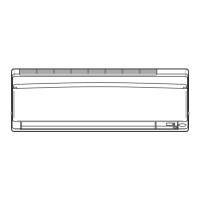
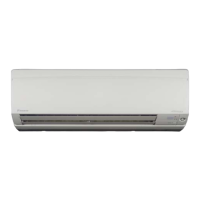


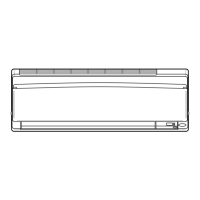
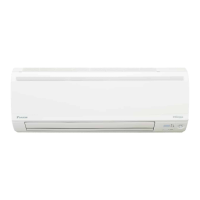




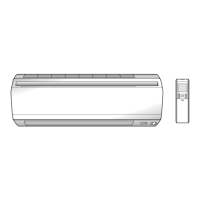
